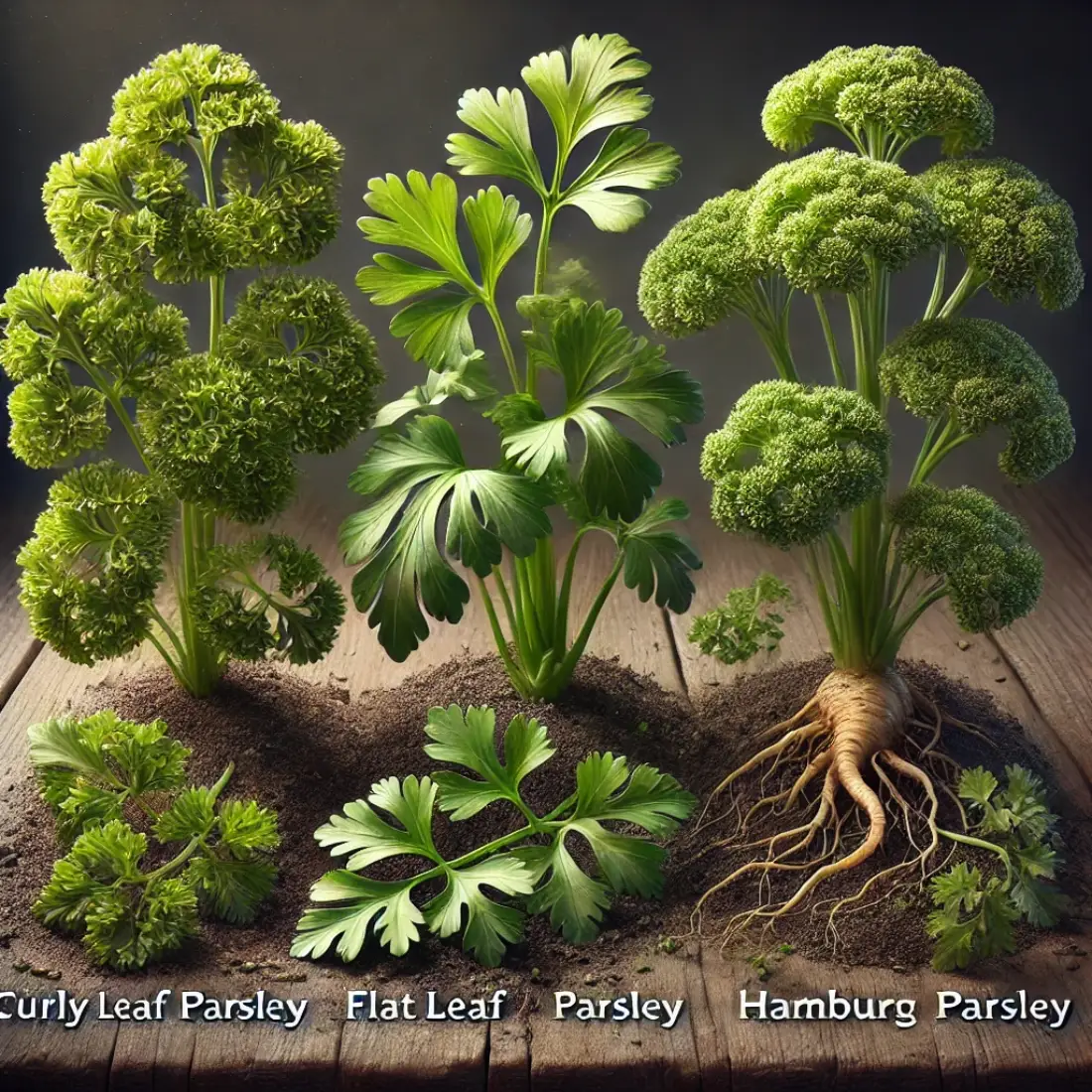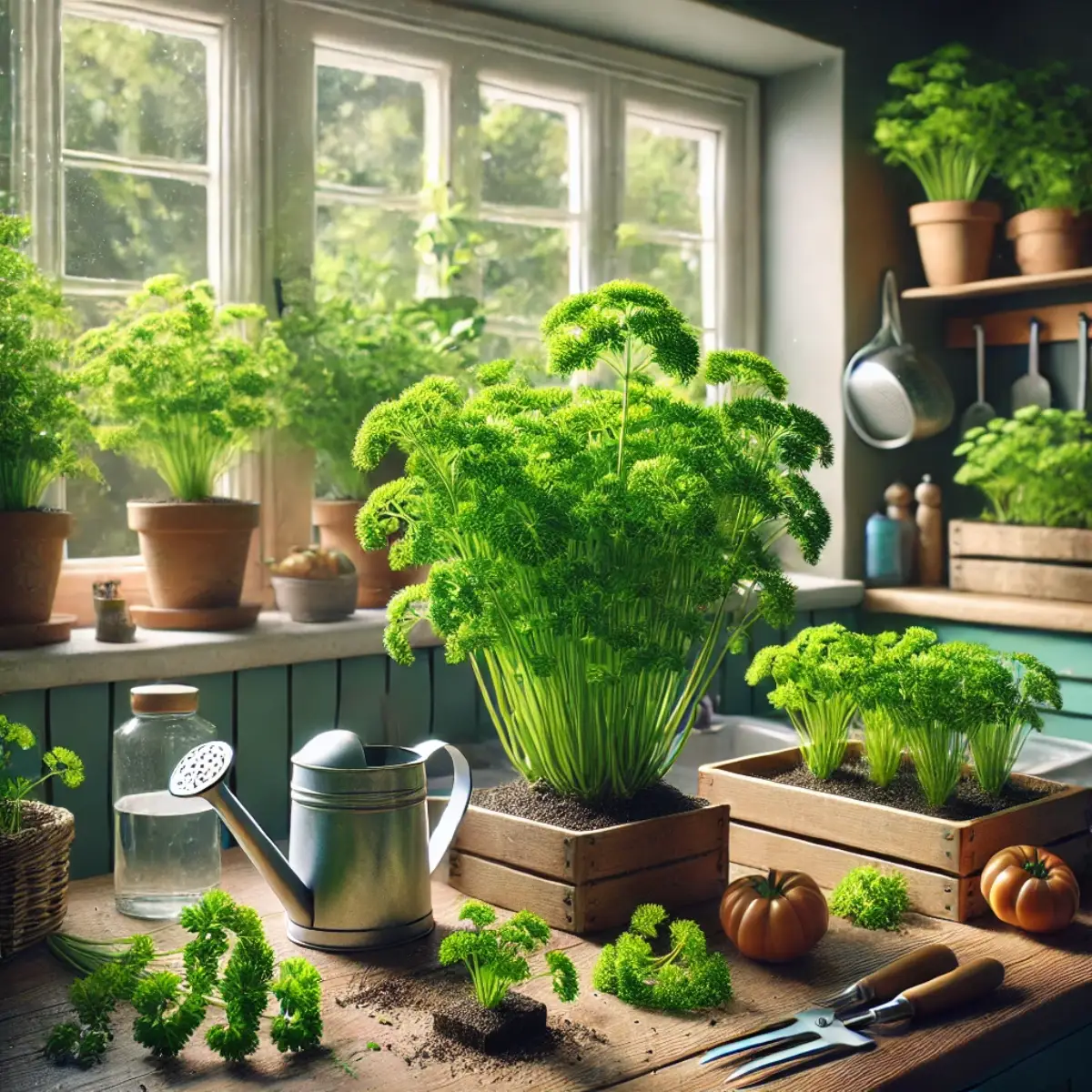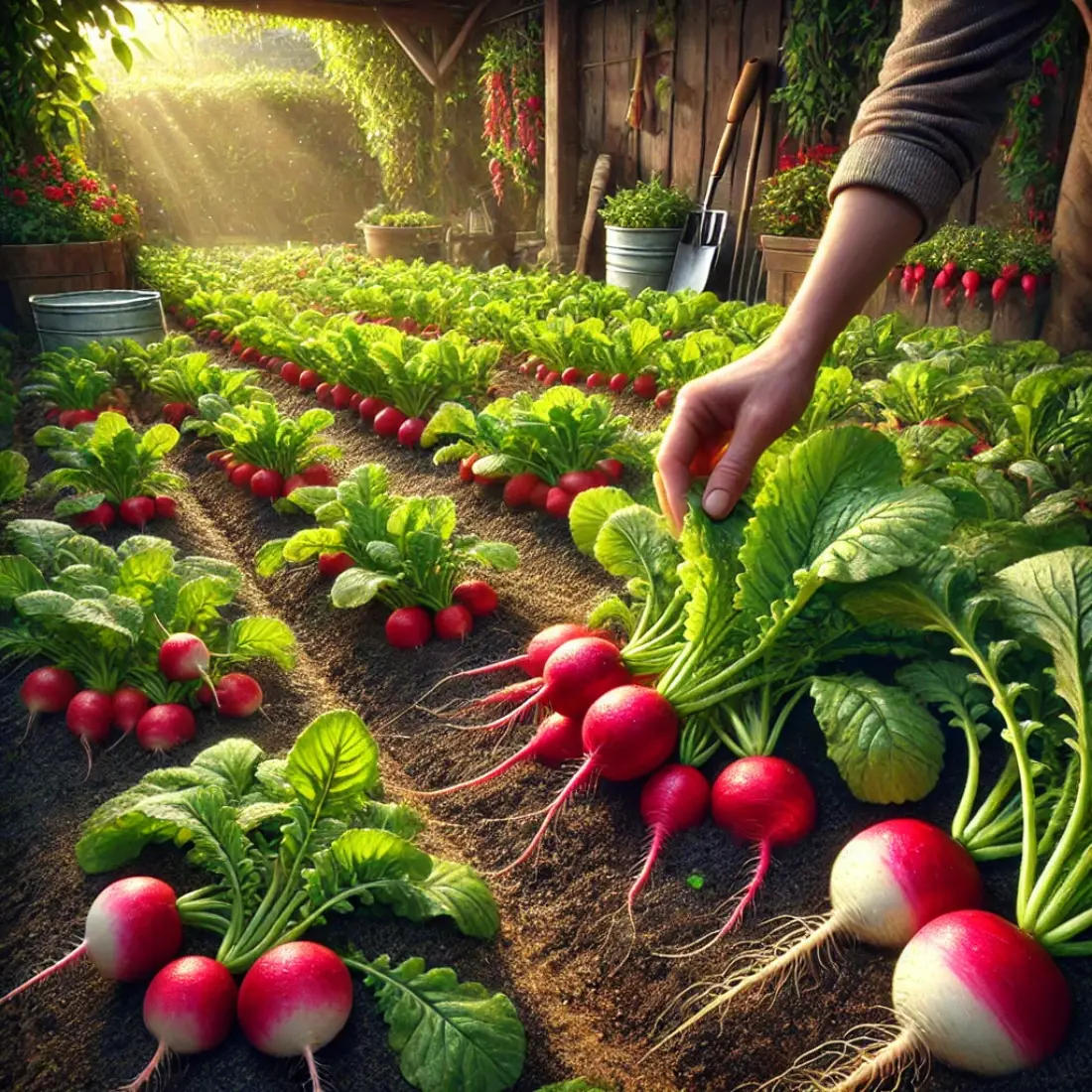Growing parsley at home offers a fresh supply of this nutrient-rich herb, perfect for enhancing your dishes. It’s cost-effective, easy to grow, and provides numerous health benefits. Plus, parsley adds aesthetic value to your garden or kitchen.
- Fresh parsley available year-round.
- Rich in vitamins and antioxidants.
- Easy and cost-effective to grow.
- Enhances the flavor of various dishes.
- Adds beauty to your space and promotes sustainable living.
Growing Parsley Outdoor
Choosing the Right Parsley Variety
Parsley comes in several varieties, each with its unique characteristics. The most common types are:
- Curly Leaf Parsley: Known for its decorative, ruffled leaves, this variety is often used as a garnish.
- Flat Leaf (Italian) Parsley: Favored by chefs for its robust flavor, this variety is ideal for cooking.
- Hamburg Parsley: Grown primarily for its edible roots, it also offers flavorful leaves.

Preparing the Soil
Proper soil preparation is crucial for healthy parsley growth. Here’s how to get started:
- Soil Type: Parsley thrives in well-draining, loamy soil.
- pH Level: It prefers slightly acidic to neutral soil, with a pH level between 6.0 and 7.0.
- Enhancement: Add compost or organic matter to enrich the soil with nutrients.
- Drainage: Ensure proper drainage to prevent root rot, which can occur in waterlogged soil.
Planting Parsley Seeds
When planting parsley seeds, timing and technique are key:
- Timing: Plant seeds in the spring after the last frost, or in the fall in mild climates.
- Seed Preparation: Soak seeds in warm water overnight to speed up the germination process.
- Planting Depth: Sow seeds 1/4 inch deep in the soil.
- Spacing: Space plants 6-8 inches apart to allow for proper growth.
- Direct Sowing vs. Transplanting: You can sow seeds directly into the ground or start them indoors and transplant them later.
Watering and Feeding
Proper watering and feeding ensure your parsley thrives:
- Watering Schedule: Keep the soil consistently moist but not waterlogged.
- Techniques: Water at the base of the plant to avoid wetting the leaves, which can lead to disease.
- Fertilizing: Use a balanced, organic fertilizer every 4-6 weeks to promote healthy growth.
- Mulching: Apply mulch around the plants to retain moisture and suppress weeds.
Sunlight and Temperature
Parsley needs the right amount of sunlight and temperature to flourish:
- Sunlight: Parsley thrives in full sun to partial shade, requiring at least 6 hours of sunlight per day.
- Temperature Range: The ideal growing temperatures for parsley are between 60-70°F (15-21°C).
- Protection: Use row covers to protect parsley from extreme weather conditions, such as frost or intense heat.
Pest and Disease Management
Managing pests and diseases is essential for healthy parsley plants:
- Common Pests: Watch out for aphids, spider mites, and caterpillars, which can damage the leaves.
- Disease Prevention: Ensure good air circulation around the plants to prevent fungal diseases.
- Organic Control: Use insecticidal soap or neem oil to manage pests naturally and safely.
Harvesting Parsley
Knowing when and how to harvest parsley ensures a continuous supply:
- Timing: Harvest parsley when the plant has plenty of mature leaves.
- Technique: Cut stems near the base to encourage new growth and prolong the plant’s productivity.
- Storage: Store harvested parsley in the refrigerator for short-term use or dry it for long-term storage.
Growing Parsley Indoor
Selecting Containers and Pots
The right container can make a big difference in the success of your indoor parsley garden:
- Size and Type: Choose pots that are at least 6-8 inches deep to accommodate parsley’s root system.
- Drainage Requirements: Ensure the pots have adequate drainage holes to prevent waterlogging.
- Potting Mix: Use a high-quality, well-draining potting mix enriched with compost.
Indoor Planting Techniques
Starting parsley indoors can be straightforward with the right techniques:
- Starting Seeds Indoors: Begin by sowing seeds in small pots or seed trays filled with potting mix.
- Transplanting Seedlings: Once seedlings have developed a few sets of true leaves, transplant them to larger pots.
- Hydroponic Growing: Consider hydroponic systems for a soil-free growing option that can maximize space and growth rate.
Providing Adequate Light
Proper lighting is crucial for indoor parsley growth:
- Natural Light: Place pots near a sunny window that receives at least 6 hours of sunlight per day.
- Grow Lights: If natural light is insufficient, use full-spectrum grow lights to supplement. Position lights 6-12 inches above the plants.
- Positioning: Rotate pots regularly to ensure even light distribution.
Watering and Humidity Control
Maintaining proper moisture levels is key for healthy parsley plants
- Indoor Watering Schedule: Water when the top inch of soil feels dry, ensuring not to overwater.
- Managing Indoor Humidity: Use a humidity tray or a room humidifier to maintain an ideal humidity level of around 50-60%.
- Avoiding Overwatering: Ensure excess water can drain away to prevent root rot.
Feeding and Fertilizing Indoors
Provide the right nutrients to keep your indoor parsley thriving
- Type of Indoor Fertilizers: Use a balanced, water-soluble organic fertilizer formulated for herbs.
- Feeding Schedule: Fertilize every 4-6 weeks, following the manufacturer’s instructions.
- Signs of Nutrient Deficiencies: Watch for yellowing leaves or stunted growth as indicators of nutrient needs.
Pest Control for Indoor Plants
Keeping indoor parsley free from pests is essential:
- Common Indoor Pests: Look out for aphids, spider mites, and whiteflies.
- Preventative Measures: Keep your growing area clean and inspect plants regularly.
- Safe Indoor Pest Control: Use neem oil or insecticidal soap to treat infestations without harming your plants.
Harvesting and Using Indoor Parsley
Harvesting your parsley correctly ensures continuous growth and fresh supply:
- Harvesting Techniques: Cut the outer stems close to the base, leaving the inner stems to continue growing.
- Ensuring Regrowth: Regular harvesting encourages the plant to produce more leaves.
- Creative Uses: Use fresh parsley in salads, soups, sauces, or as a garnish to enhance the flavor and nutrition of your meals.
FAQs about Parsley
What are the benefits of growing parsley at home?
Growing parsley at home provides a fresh supply of this nutrient-rich herb, enhances the flavor of your dishes, and adds beauty to your garden or indoor space. It’s also cost-effective and promotes sustainable living.
Can parsley be grown year-round?
Yes, with the right indoor conditions such as adequate light and temperature control, parsley can be grown year-round.
How often should parsley be watered?
Water parsley when the top inch of soil feels dry. Ensure the soil is consistently moist but not waterlogged to prevent root rot.
Why are my parsley leaves turning yellow?
Yellow leaves can indicate overwatering, underwatering, or a nutrient deficiency. Adjust watering habits and consider adding a balanced fertilizer.
What kind of soil is best for growing parsley?
Parsley thrives in well-draining, loamy soil with a pH level between 6.0 and 7.0. Enriching the soil with compost or organic matter can enhance growth.
How much sunlight does parsley need?
Parsley requires at least 6 hours of sunlight per day. If growing indoors, place it near a sunny window or use full-spectrum grow lights.
How do I prevent pests on my indoor parsley plants?
Keep the growing area clean, inspect plants regularly, and use safe pest control methods such as neem oil or insecticidal soap to treat infestations.
When is the best time to harvest parsley?
Harvest parsley when the plant has plenty of mature leaves. Cut the outer stems close to the base to encourage continuous growth.
Can I grow parsley in containers?
Yes, parsley grows well in containers. Choose pots that are at least 6-8 inches deep with adequate drainage holes, and use a high-quality potting mix.
How can I store harvested parsley?
Store harvested parsley in the refrigerator by placing the stems in a glass of water and covering it with a plastic bag. Alternatively, you can dry the parsley and store it in an airtight container for long-term use.









